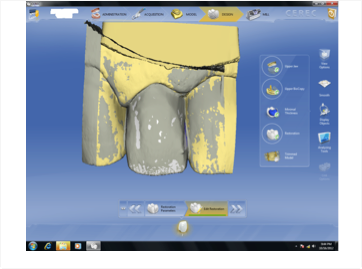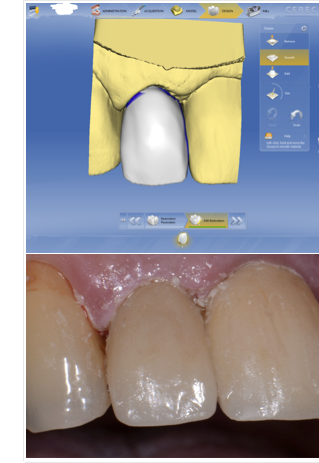Back in the days when the Red Cam was the only game in town, we were concerned with imaging problems that piled up to harm our final restoration. Bad data and averaging of that data forced us to take as few images as possible. The standard for a single restoration in Correlation, as it was called in those days, was one. Two for the tooth to be copied was the norm.
Suddenly, the Blue Cam and now most certainly the Omnicam, makes it simple for us to create larger models with ease. While we no longer need to worry to a great degree about image averaging, the more Blue Cam images we take the greater potential for error. Shaky images or images that have a lot of artifact in them can still lead us down a bad path. Keeping your images to a minimum is still prudent.
This week I had an opportunity to do just that. Having a patient present with a fractured Maxillary Lateral, I was able to temporarily bond the fragments back together. I imaged this preoperative situation only twice. Once from the direct Incisal and once with the camera rolled to the Facial. After prepping, one image of the prep down the path of draw capturing the margin fully was all I took. Imaging time was reduced, design time was reduced, the computer speed was great and the accuracy was fantastic.
This emergency patient was worked into the schedule and was out the door with a great result in just an hour. Just because we can take a bunch of images quickly, or scan an area extensively, we just do not need to in many situations. It just slows us down and does not offer a great advantage in BioCopy.


So, keep in mind. It is better to take fewer quality images than many of a poorer quality. Keep those old school principles in mind and get the job done better and faster.
 Jeffrey Caso
Jeffrey Caso